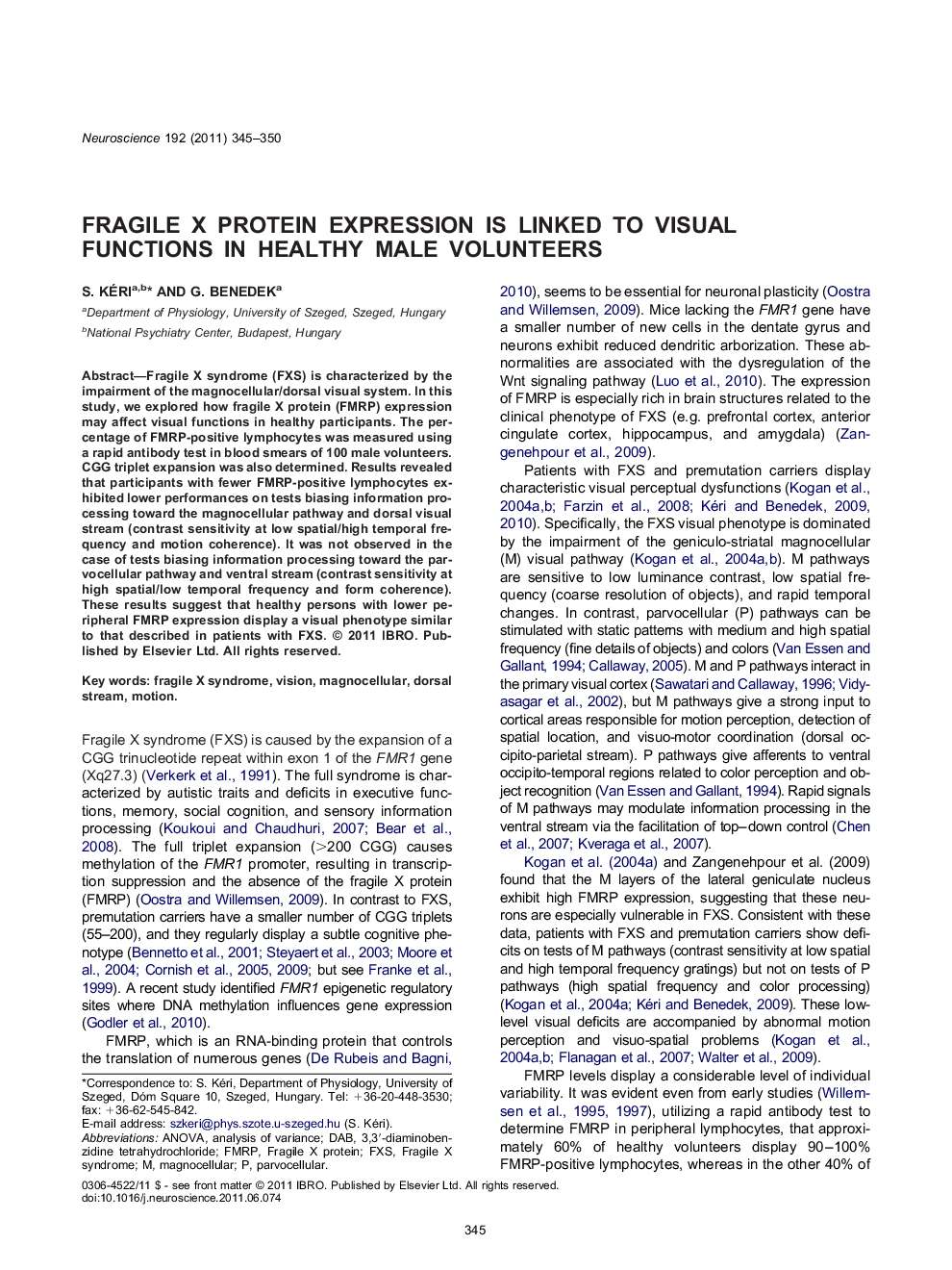| Article ID | Journal | Published Year | Pages | File Type |
|---|---|---|---|---|
| 6276081 | Neuroscience | 2011 | 6 Pages |
Fragile X syndrome (FXS) is characterized by the impairment of the magnocellular/dorsal visual system. In this study, we explored how fragile X protein (FMRP) expression may affect visual functions in healthy participants. The percentage of FMRP-positive lymphocytes was measured using a rapid antibody test in blood smears of 100 male volunteers. CGG triplet expansion was also determined. Results revealed that participants with fewer FMRP-positive lymphocytes exhibited lower performances on tests biasing information processing toward the magnocellular pathway and dorsal visual stream (contrast sensitivity at low spatial/high temporal frequency and motion coherence). It was not observed in the case of tests biasing information processing toward the parvocellular pathway and ventral stream (contrast sensitivity at high spatial/low temporal frequency and form coherence). These results suggest that healthy persons with lower peripheral FMRP expression display a visual phenotype similar to that described in patients with FXS.
â¶FMRP expression in lymphocytes is associated with motion but not form perception. â¶FMRP expression in lymphocytes is associated with contrast sensitivity at low spatial frequency. â¶FMRP may be implicated in the functioning of the magnocellular visual system. â¶Peripheral FMRP expression is a molecular marker of perception.
